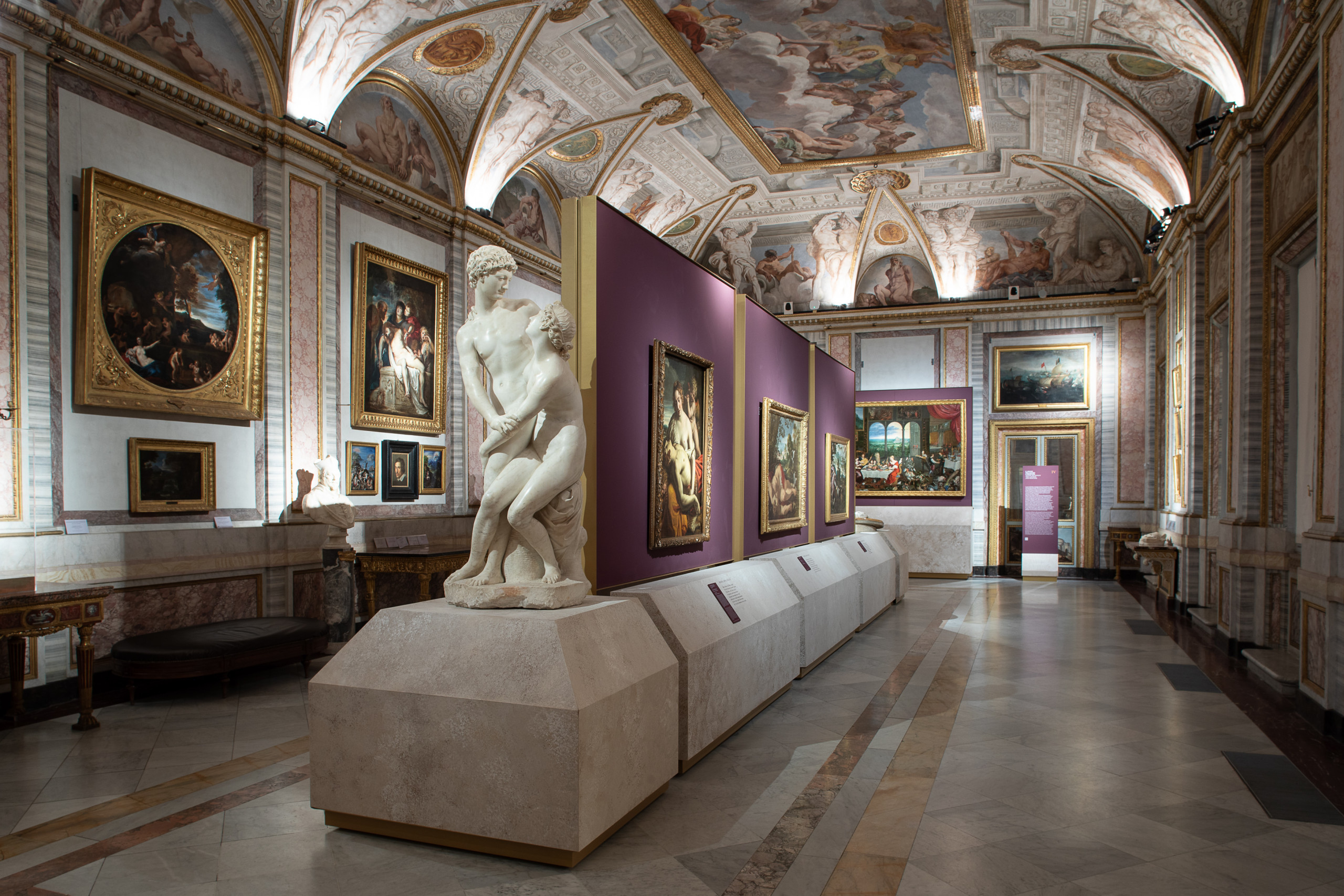ADONE BETWEEN THE SACRED AND PROFANE

The creation of Marino’s Adone spanned his whole career, becoming, over the years, the very centrepiece of his oeuvre. The myth, told in Ovid’s Metamorphoses, describes Venus’ love for a young man (Adonis), its sexual fulfilment and its tragic ending when Adonis is killed by a wild boar, driven by Mars’ jealousy.
A wealth of literature was devoted to this theme over the course of the 17th century, and the story of Adonis inspired some pictorial masterpieces by the likes of Titian, Veronese and Tintoretto.
Marino began composing Adone during his youth in Naples and continued to work on it for many years. Though initially fairly compact, the poem expanded significantly after 1615, comprising 20 cantos and over 40,000 verses. After its publication in Paris in 1623, Adone became the model of excellence in Baroque poetry: a work filled with figurative imagery that reflected Marino’s great passion for art.
The paintings in this section present the myth in relation to the poem: on one side, the lovers are shown through works by Cambiaso and Palma the Younger; on the other, paintings by Scarsellino, Turchi, Laurent de Hyre, and Poussin represent Venus’ lament over Adonis’ dying body, in a manner that evokes the Virgin weeping over Christ’s deposition. Marino’s whole poem plays on the mixing of the sacred and profane, a risky decision which led to the Adone’s condemnation and its banishment to the Indice dei libri proibiti (Index of forbidden books).